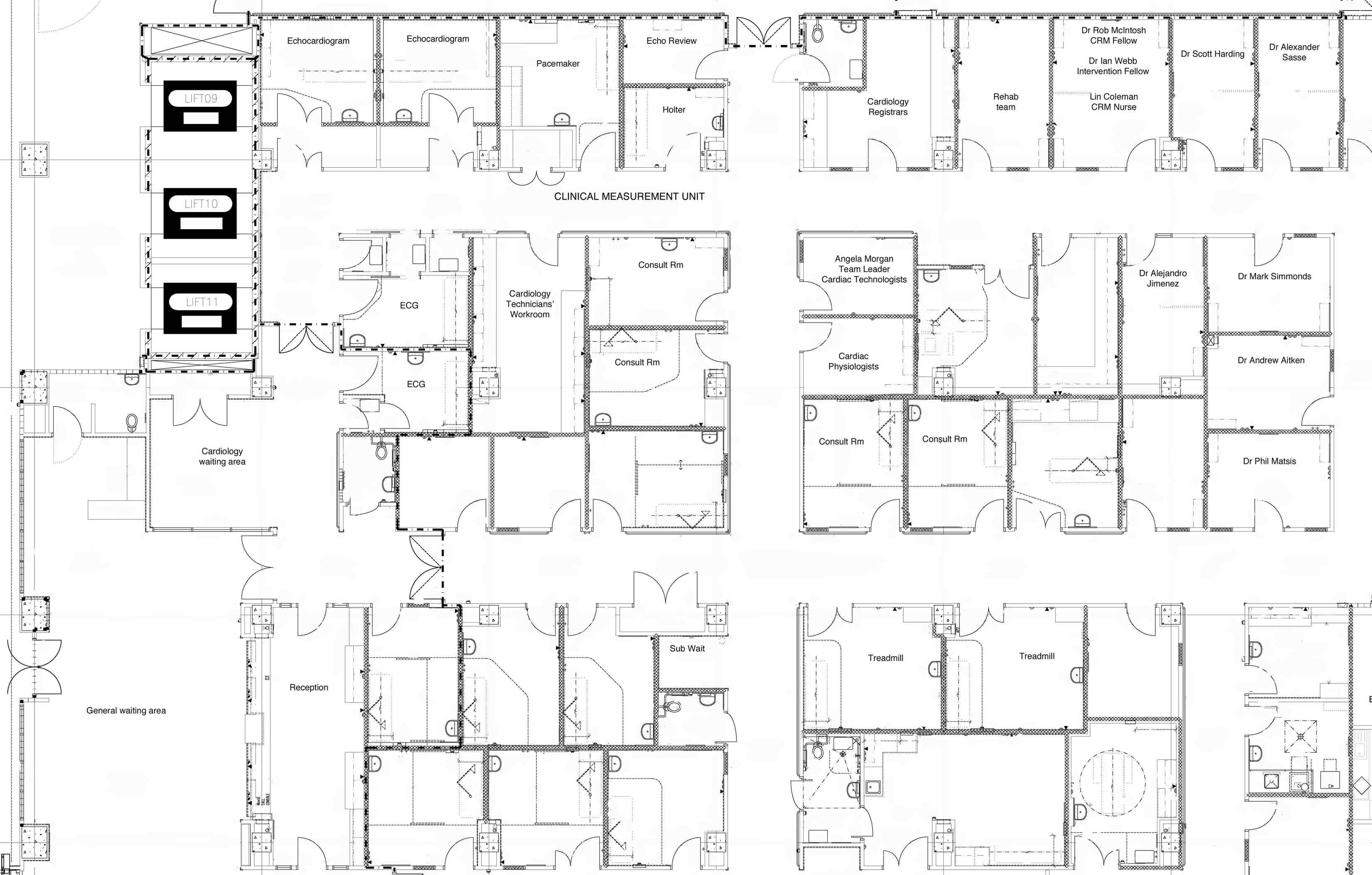The Original Cardiology Department

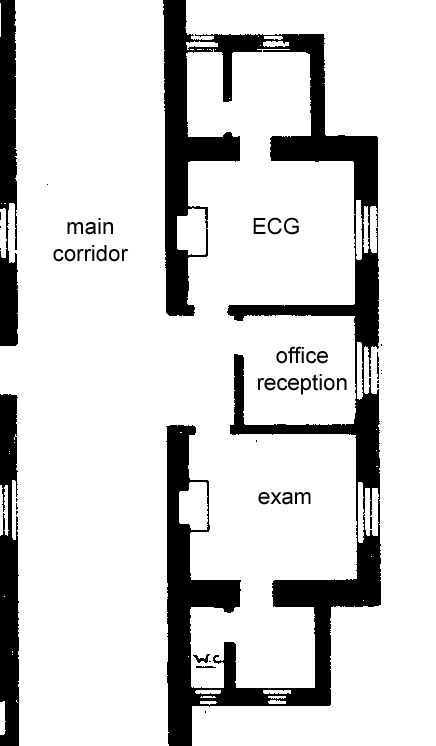
In 1926 Fred Bowerbank was given three small rooms to use as the Cardiology Department. In the original 1881 hospital design, these had been intended for use as one of two private ward suites, and were situated on the north side of the main corridor. (The other private suite was sacrificed in the building of the Main Theatre block in 1901).
The larger room at the top of the plan was used to record ECGs and BMRs, and processing of the photographed tracings was done in a small adjacent room (top). The office/reception occupied the central room, and the other larger room was where consultations were undertaken.
When Charles Burns succeeded Fred Bowerbank in 1939, there was a sharp increase in workload, partly as a result of referral of service personnel. Charles also followed up patients with cardiac conditions that he had discharged from his general beds, and he began to receive referrals of patients from outside practitioners. There were increasing numbers of ECGs to be reported.
John Keeling was appointed visiting Assistant Physician, Cardiology in 1949, and this went some way to deal with the increasing workload. Charles Burns was paid for just one session/week for his cardiological work though by the late 40s / early 50s, he was in effect working three sessions. The tiny Cardiology Department was by now far too small, and Charles began pushing for a larger space from the early 50s.
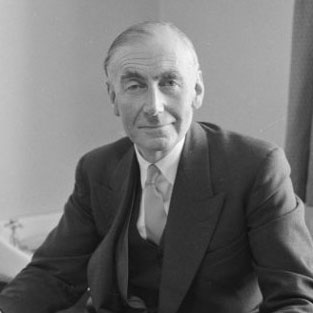
Charles Burns, 1958
It was somewhat ironic that in the same year Charles Burns retired (1958), a new and expanded department opened in what had been the original Ward 4 (vintage 1881), just across the main hospital corridor. This facility incorporated the Hypertension Clinic, founded by Ponty Hallwright in 1955 and until now based in Ward 2.
In the revamped Ward 4, there was ample space for cardiology technicians, an X-Ray screening room, and a meeting room in which weekly meetings with the cardiothoracic surgeons could be held to discuss patients referred for cardiac surgery.
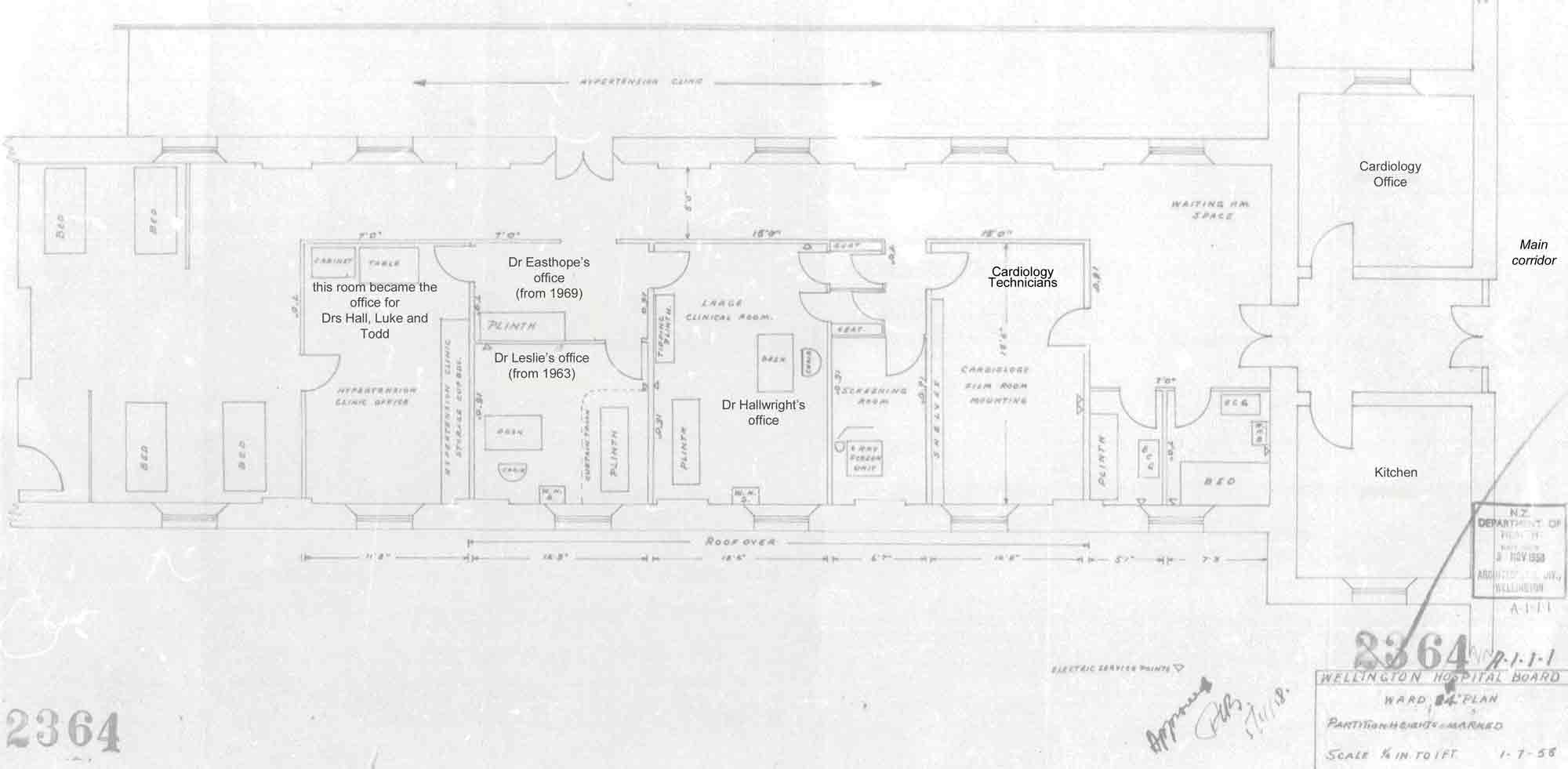
Outpatient Services, 1958 - 1973
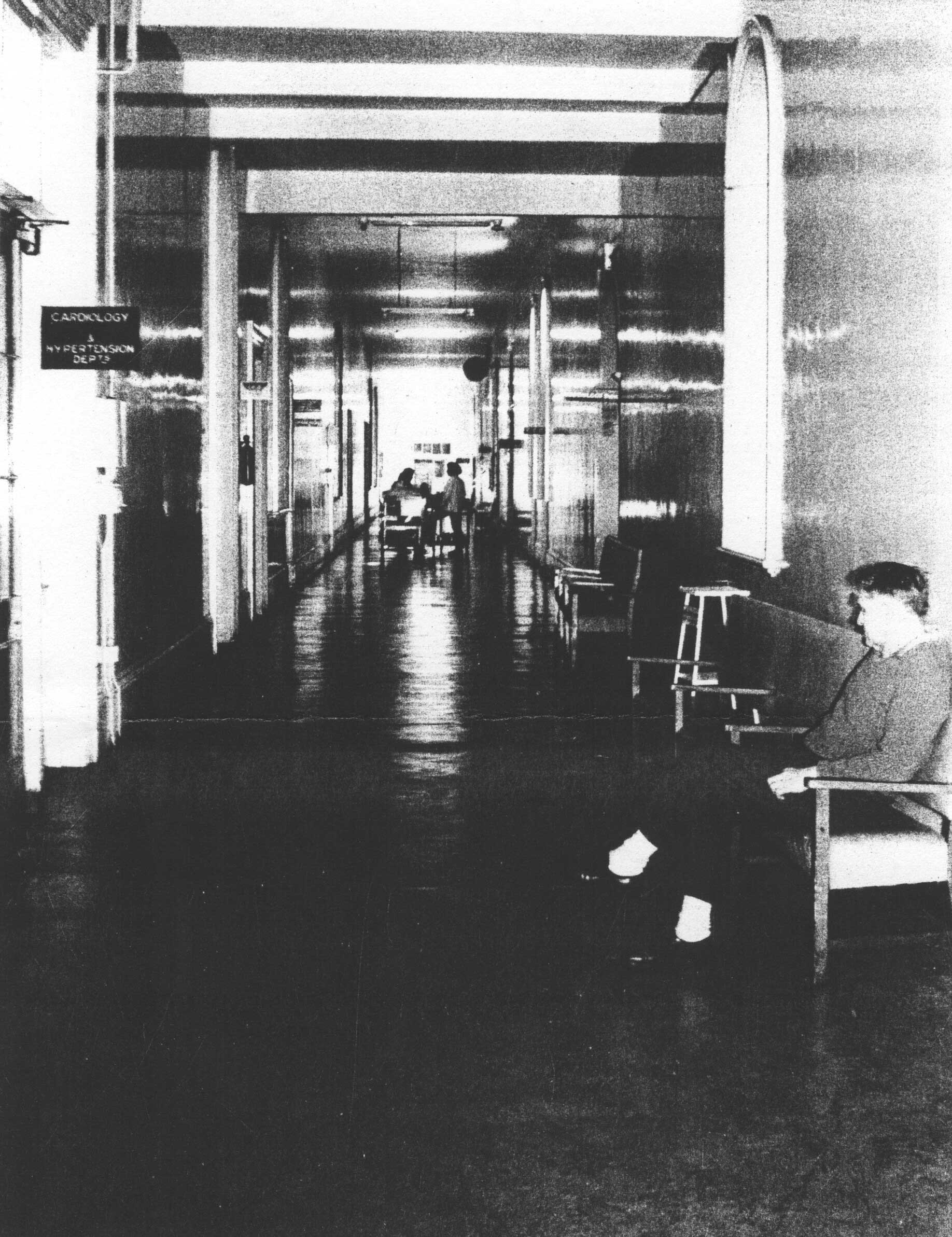
This rather poor quality photocopy shows the entrance to Cardiology and Hypertension in the foreground on the left, with the old main corridor running in a westerly direction.
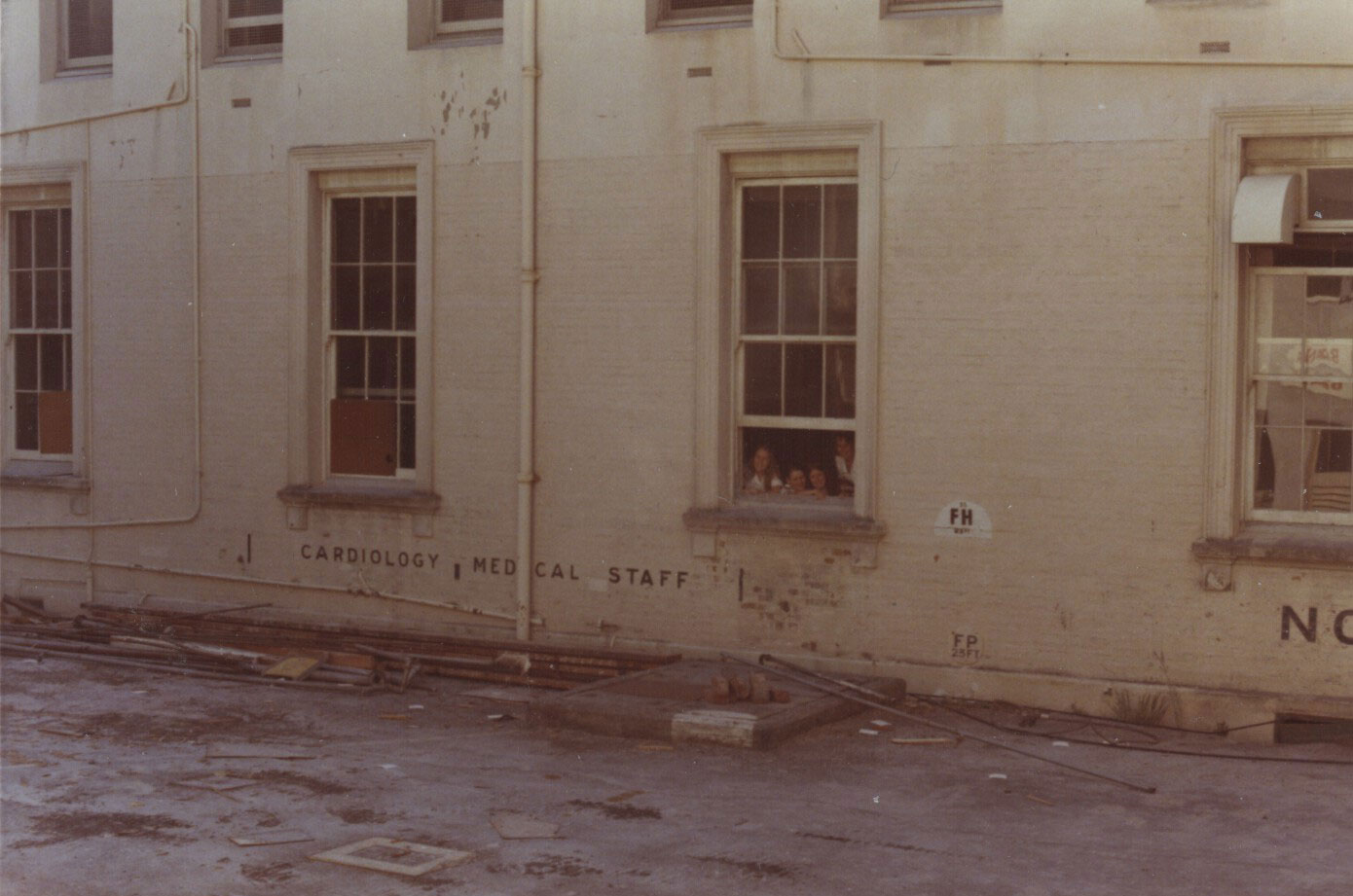
At right is the outside view of the Department. Note the reserved and free car parking for Cardiology medical staff! As shown on the plan, the spacious Hypertension Clinic patient area was on the opposite side of this building.
This facility served the needs of cardiology well but by 1970 had become too small for an increase in staff and patient numbers. In a letter to the Superintendent-in-Chief, Ponty Hallwright wrote:
"at present my department has four clinic rooms for senior staff (one of them shared by four physicians) and we have only a small alcove which is off the hypertension office, for use by the registrars and house physician. The cardiology technicians work in a room which has become far too small as their numbers have increased with the work load. The cardiology sister's office has no natural lighting and is poorly ventilated."
In addition, Block B (the Clinical Services Block) was being constructed and noise levels were unacceptable.
So, plans were drawn up for a much larger department, to be located in what had been the Pay Office and other administrative offices, situated in the Front Block extension. A quote of $41,000 for the necessary building work was accepted, and the work was completed in October 1973. Once the department had transferred, the old one was demolished (see below) to make way for the planned Academic and Link Blocks.
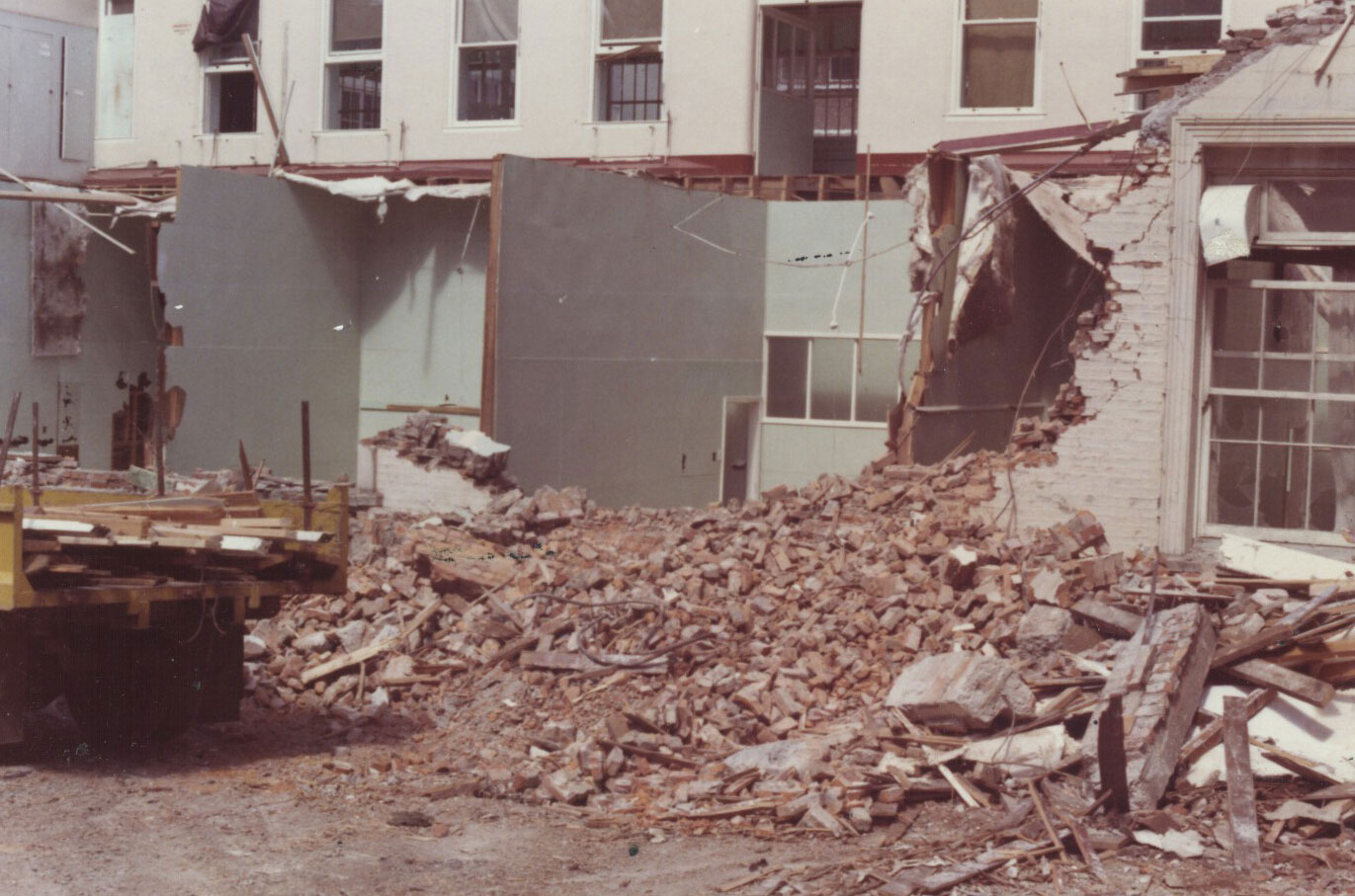
Next, the floor plan of the new Cardiology and Hypertension Department:
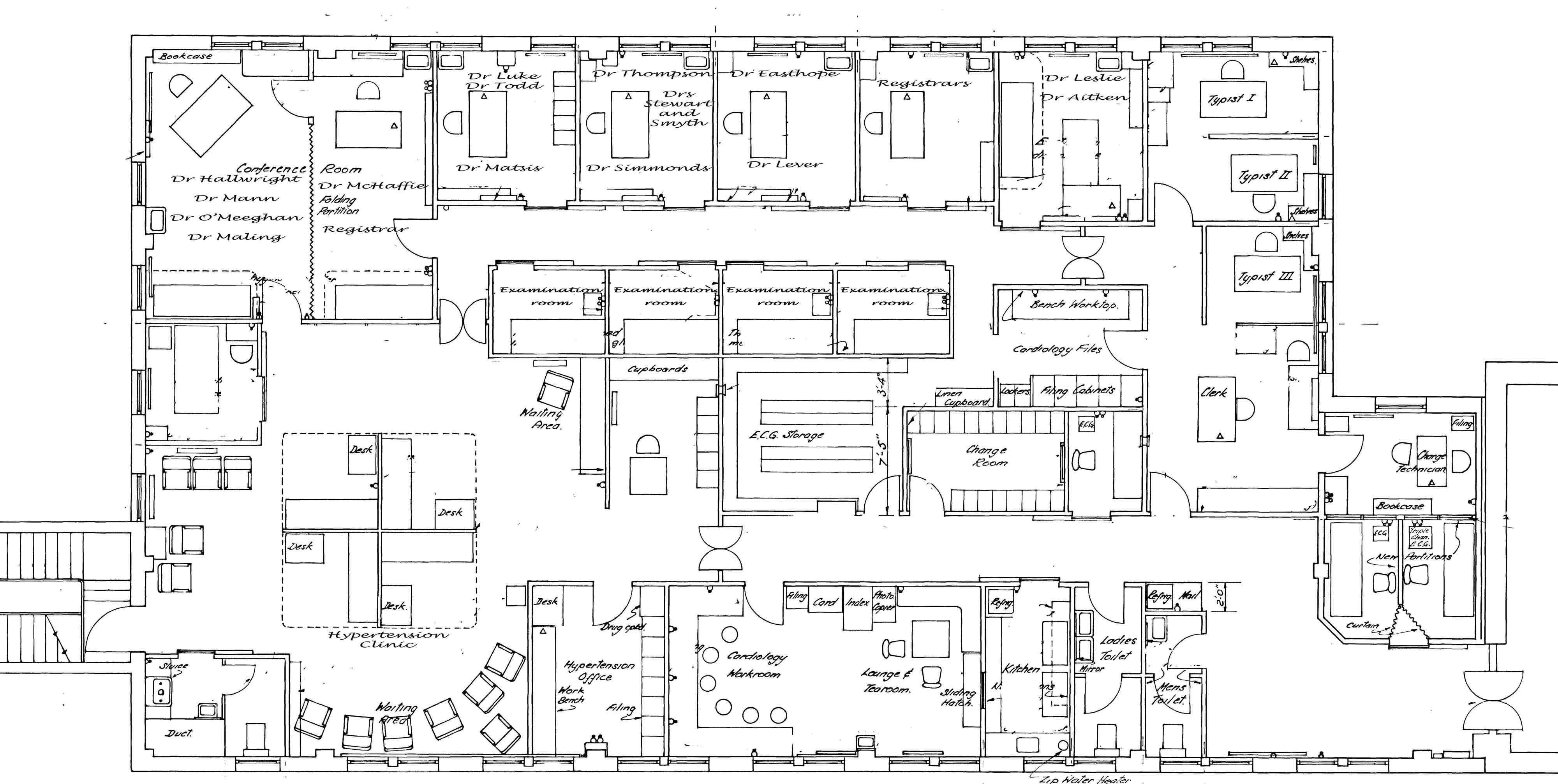
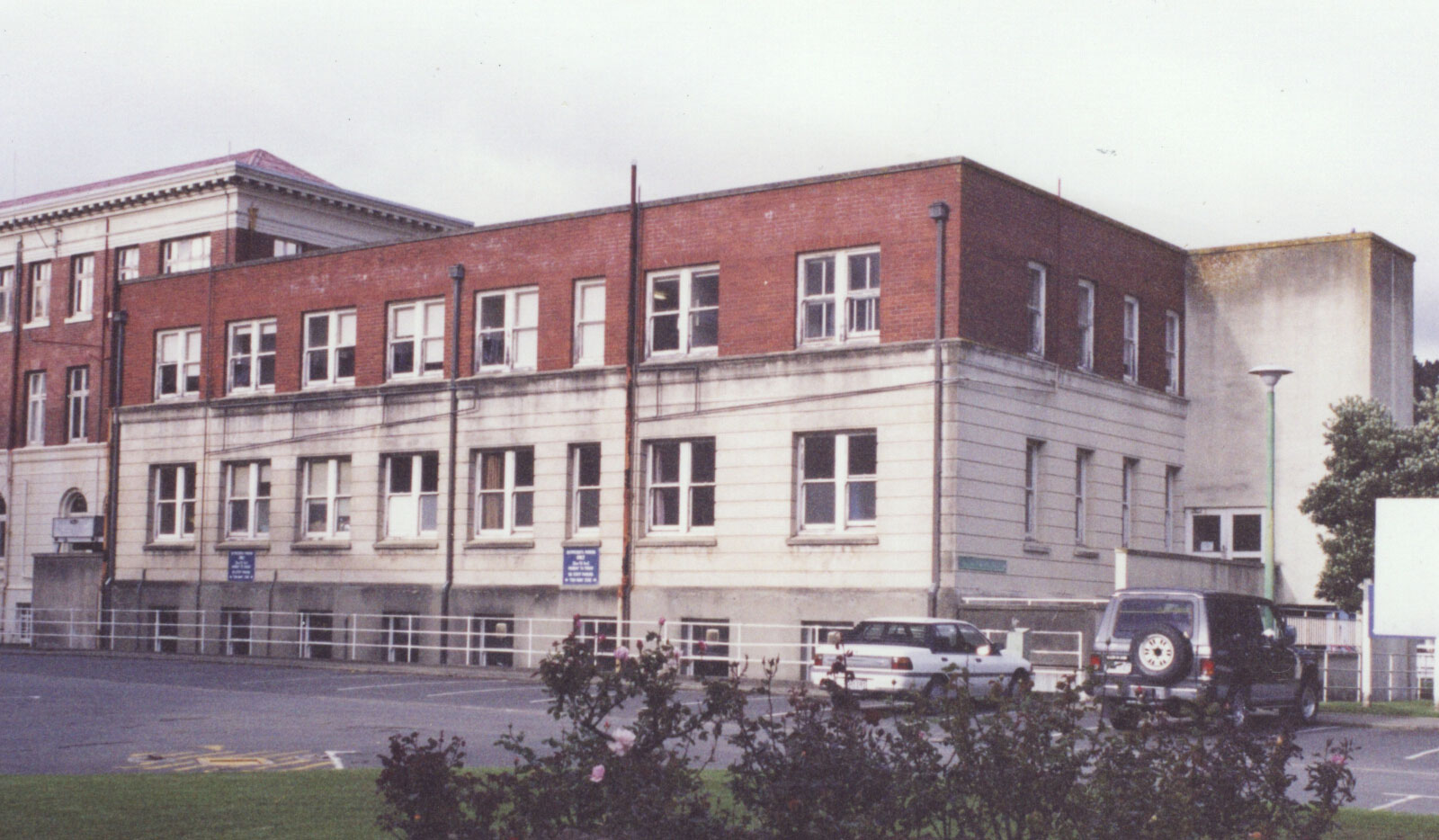
The new department occupied the whole of the top floor of the block shown in the photos (darker coloured walls). There was office and examination space for six senior medical staff, one of the offices shared with a registrar, and there was an additional registrar's office. The larger room at the north end of the block was initially for Ponty Hallwright, later Stewart Mann and was also used for weekly senior medical staff meetings.
There were expanded facilities for clerical / reception staff, including space for extra chart filing in the attic area.
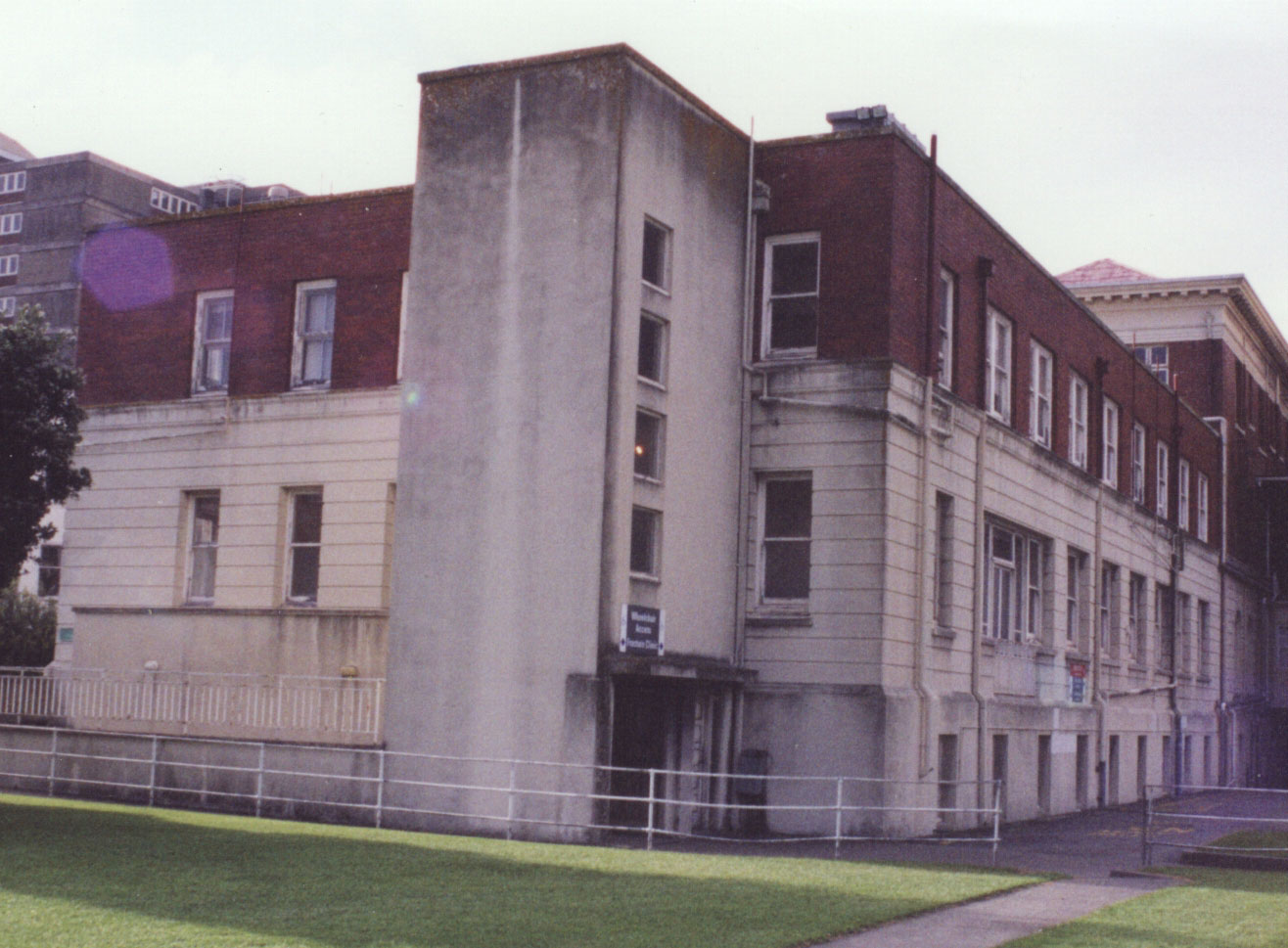
The space available for the Hypertension Clinic was actually smaller than in the 1958 department, but the numbers of hypertensive patients being referred and followed up was beginning to decline.
Outpatient Services 1973 - 2003
Over time, as staff numbers grew and investigations such as echocardiography became possible, the department extended into the areas off the corridor which connected the main department with the main hospital corridor. These extra areas had earlier been occupied by neurology staff, and were adapted for a treadmill room, echocardiography rooms, and a room for one cardiology typist.
This department would probably have continued to be adequate for service needs for longer but the area had to be vacated to make way for the erection of the new Wellington Regional Hospital.
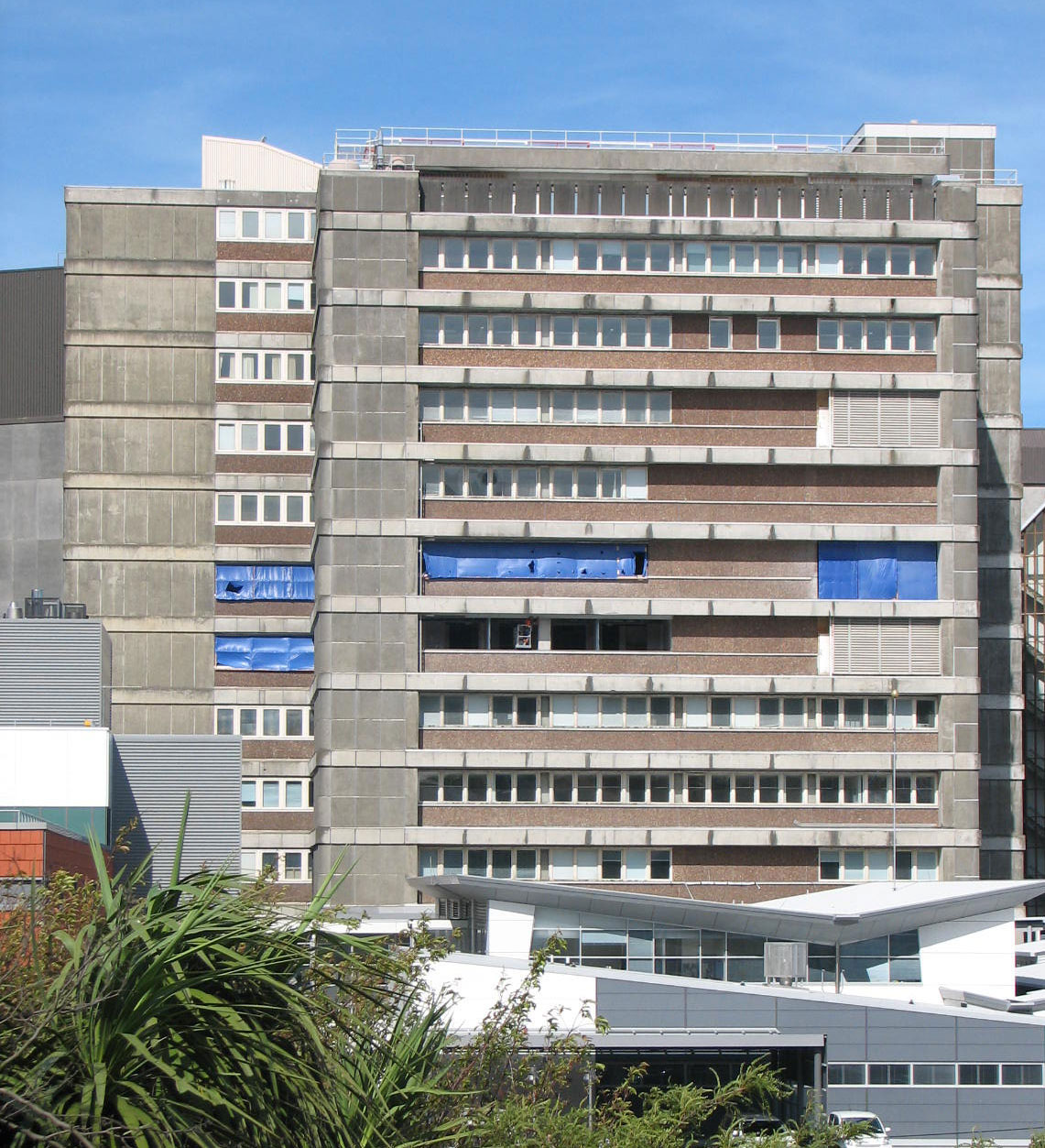
Accordingly, space for an interim department was identified on the 11th floor, Clinical Services Block, and after completion of the necessary building work, the service moved up there in mid 2003.
Below are the floor plans for the temporary department.
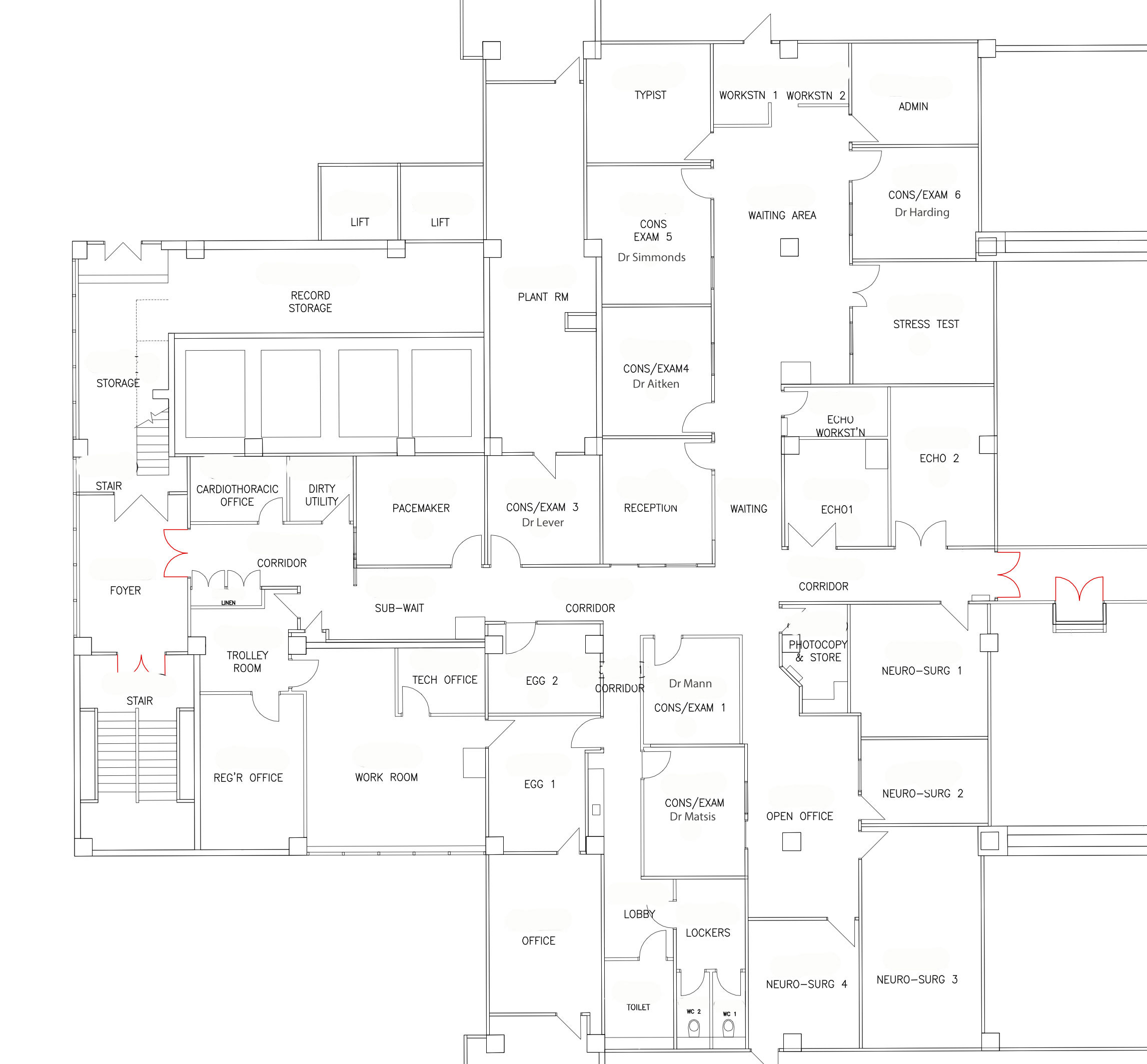
Outpatient Services 2003 - 2008
The 11th floor, CSB was shared with the Neurosurgery Department, which occupied a smaller area.
Access to the floor was not ideal - none of the four passenger lifts that serviced the CSB went beyond the 10th floor.
Outpatients attending the department used one of the goods lifts on the south side of the block. Staff generally took a passenger lift to the 10th floor and then walked up one flight of stairs.
This temporary department served its purpose until the new Wellington Regional Hospital complex was ready for occupancy. The next facility for out-patient cardiac services would be significantly different and was to be known as the Clinical Measurement Unit.
The new premises were ready for occupation in January 2009.
Clinical Measurement Unit
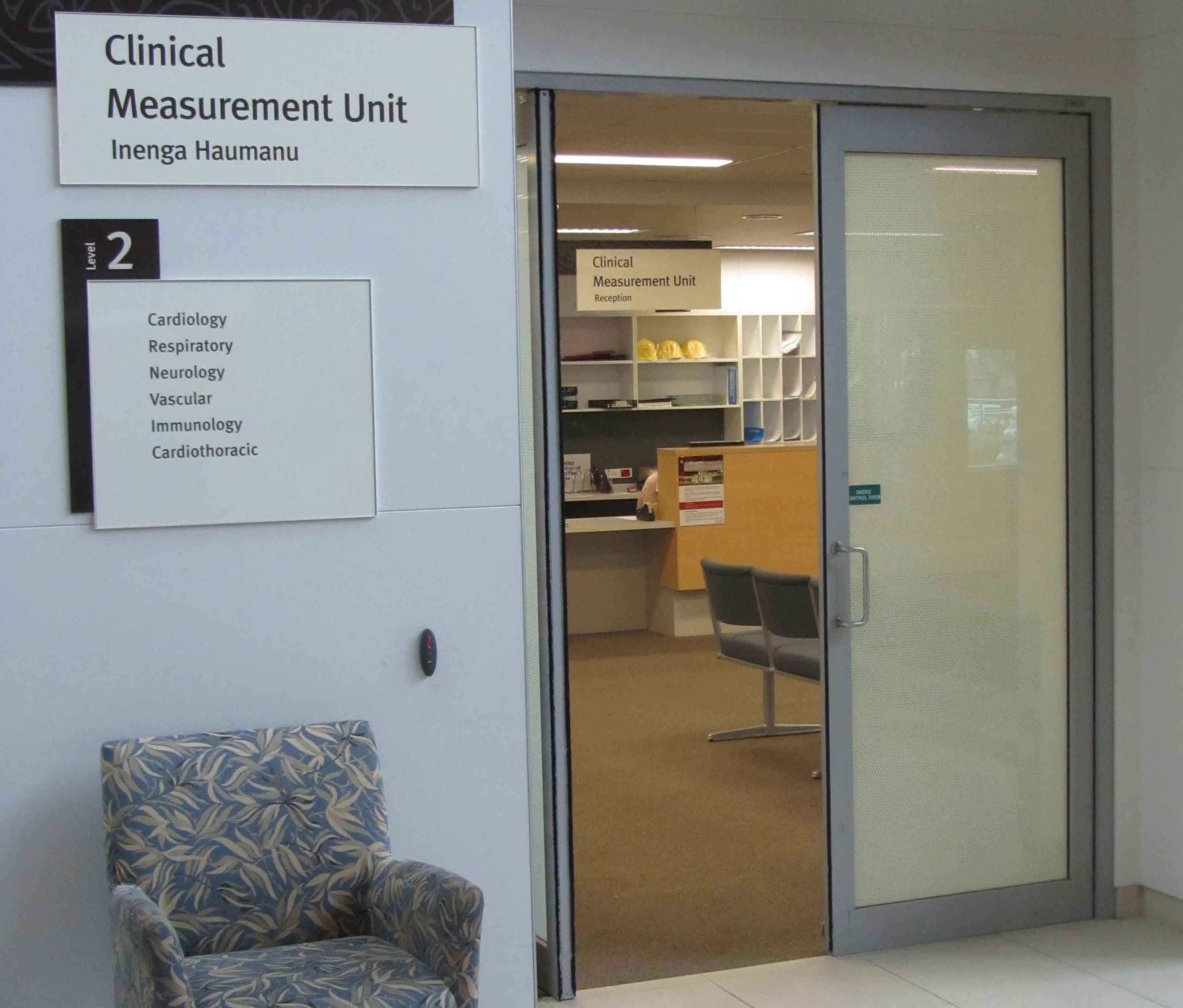
No longer was there a named 'Cardiology Department'. Instead, several services (Cardiology, Respiratory Medicine, Neurology, Vascular and Cardiothoracic Surgery) shared a common reception / patient waiting area and a shared administration staff (reception, booking, scheduling, secretarial, etc).
One advantage to the cardiology services was the close proximity to the new Cath. Labs, and the relatively short elevator ride to the cardiology ward and CCU.
The consultation areas, clinician's and technician's offices, and the rooms for tests relative to subspecialty, were more or less congregated in separate blocks within the CMU.
Below are photographs of the some of the investigation rooms in the CMU
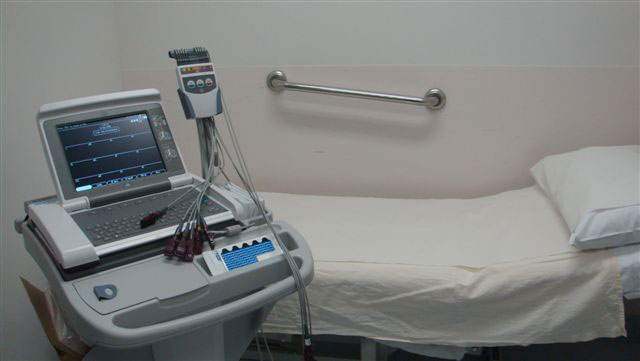
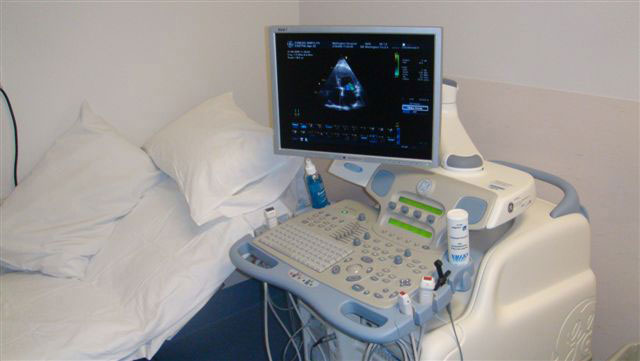
ECG room Echo room
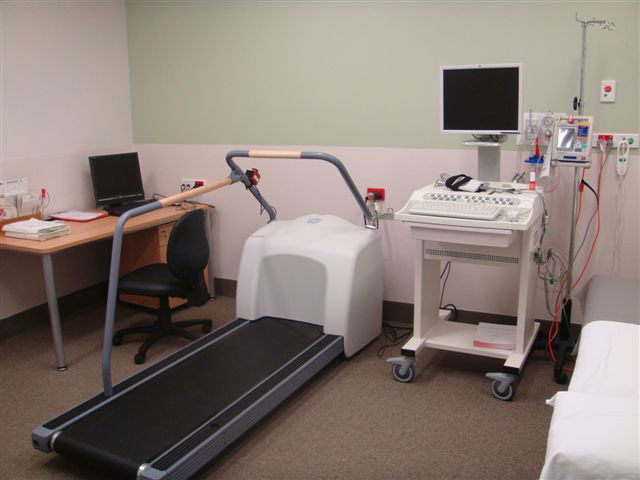
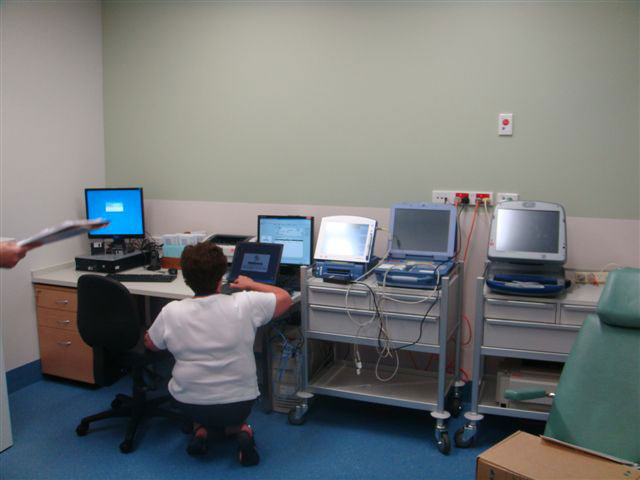
Exercise Lab Pacing Clinic
Below is the floor plan of the CMU:
